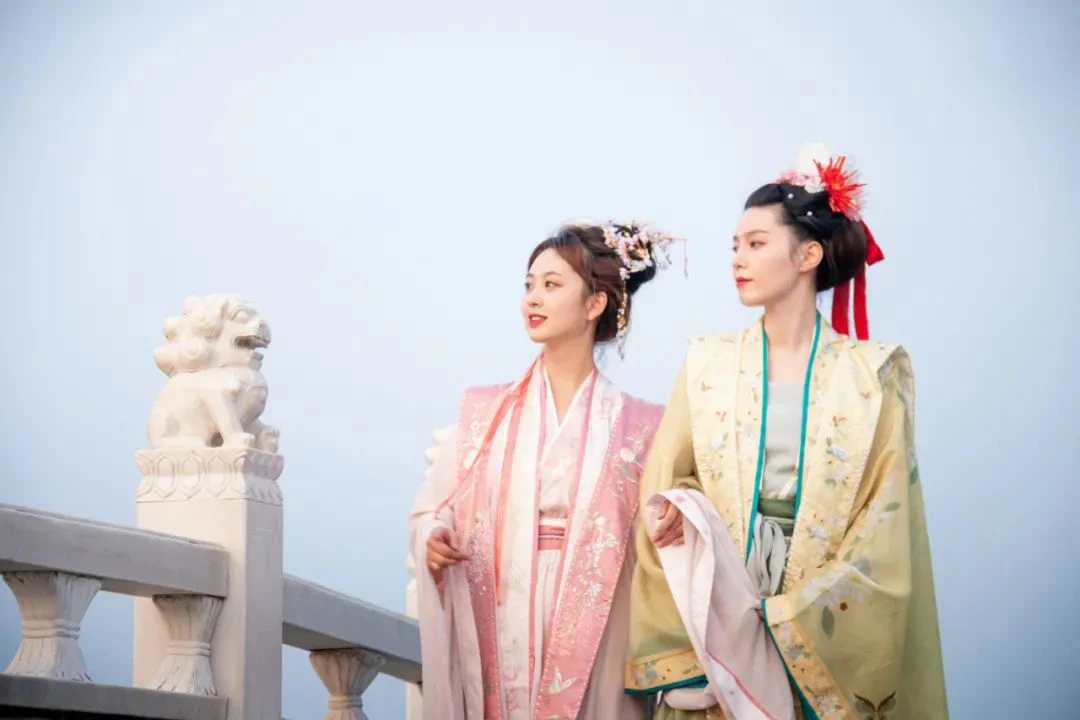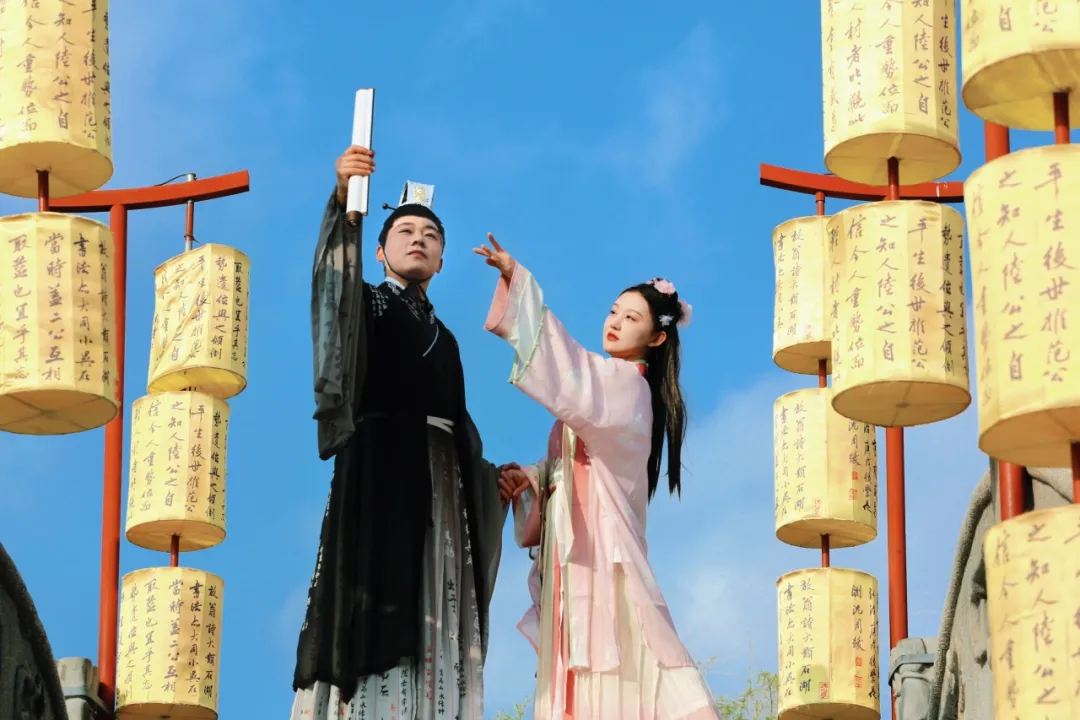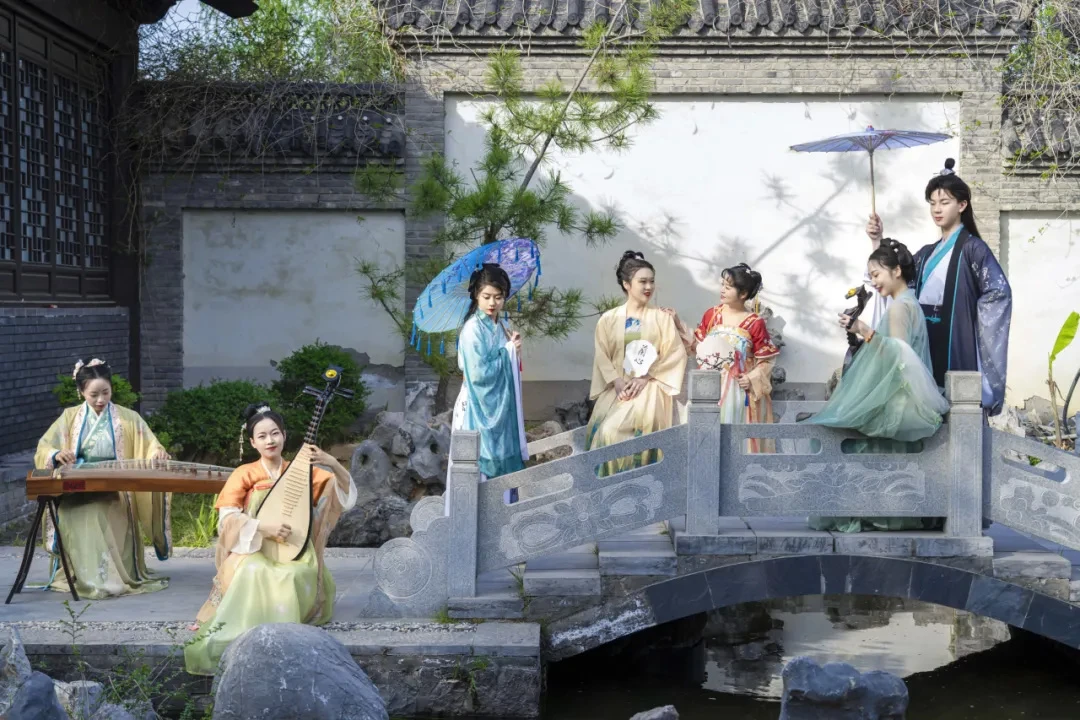In the beautiful spring of April, more than 300,000 young people from China and around the world gathered in Shanghai for the 2024 Chinese Hanfu Week. Together, they immersed themselves in the rich and fascinating world of Chinese traditional culture, blending the ancient and enduring history with modern life through their boundless enthusiasm.
The ongoing trend of “guofeng” (national style) consumption has now reached new heights. Elements of traditional Chinese clothing, such as cloud shoulders and horse-faced skirts (known as “mamianqun”), are increasingly worn by young people. Archaeological blind boxes from major museums across the country are selling out, and workshops dedicated to intangible cultural heritage attract crowds of young enthusiasts.
This generation of Chinese youth, with their various expressions of love for traditional culture and confidence in “Chinese aesthetics,” is actively contributing to the preservation and development of Chinese cultural heritage. Let’s explore how this cultural revival is manifesting in their daily lives.
Guofeng Everywhere: From Clothing to Lifestyle
In recent years, guofeng has become a hot topic among young people, especially those born in the 1990s and 2000s. Traditional Chinese cultural elements have regained prominence across various consumer scenarios, deeply integrating into daily life—whether it’s fashion, food, home decor, or entertainment. Confidently donning traditional Chinese attire, young people create beautiful scenes against historical landmarks, urban backdrops, and rural landscapes. They’ve become a source of inspiration for countless like-minded individuals.
Dr. He Chuhan, a traditional culture professor at Hebei University, is often praised by her million-strong social media following as the “Ph.D. who tells the best stories.” She observes that more and more young people around her are embracing this lifestyle. Dr. He herself wears a stunning horse-faced skirt, a style that has surged in popularity among young people.
Originally evolving from the Song dynasty’s “xuanqun,” the horse-faced skirt got its name due to its resemblance to the “horse face” of the Ming city walls. As one of the main representatives of ancient Chinese skirts, the diverse and distinctive horse-faced skirt has become a sensation. According to the 2024 Douyin e-commerce female consumer trend report, orders for horse-faced skirts increased by 841% year-on-year. JD.com data also shows that since January, JD’s transaction volume for hanfu, including horse-faced skirts, has grown by over 300%. In Shandong’s Cao County, a major hub for modern hanfu production and sales, online sales of horse-faced skirts alone reached nearly 900 million yuan in the first quarter of this year.
The horse-faced skirt is just one example of the booming guofeng consumer preferences. Traditional cultural elements are branching out into broader and deeper domains. The comprehensive supply of Chinese traditional culture has given rise to a massive new market, inspiring young people to indulge in cultural consumption.
From Museums to Cultural Tourism: A Nationwide Trend
The guofeng wave extends beyond fashion and into cultural tourism. With the popularity of the Forbidden City and Sanxingdui, archaeological sites and museums across the country are witnessing an influx of young fans eager to explore and capture moments. The latest operational data for 55 national archaeological sites parks, released by the Chinese Academy of Cultural Heritage, shows that ticket revenue for these parks increased by about five times in 2023 compared to the previous year. The demand for cultural creativity, archaeological study, and other cultural tourism experiences has also reached new heights.
At Anhui Museum, Deputy Director Ji Yong observes the vibrant cultural consumption firsthand. “Apart from the exhibition halls, the most lively area is undoubtedly the cultural and creative space,” he says. From stationery and books to accessories and cultural blind boxes, these products infused with historical elements never fail to ignite young people’s desire to purchase. Non-material cultural heritage markets also attract thousands of young visitors during heritage fairs.
Spiritual and Cultural Consumption: A Deeper Connection
In the realm of spiritual and cultural consumption, local traditional customs, traditional opera, and dance are as popular among young people as any celebrity. From the English song-and-dance performances in Guangdong’s Chaoshan region to the revival of traditional hairpins (zanhua) in Quanzhou, Fujian, young audiences are embracing these cultural treasures. The Zhejiang Xiaobaihua Yueju Opera Troupe’s young actor Chen Lijun has propelled Yueju opera to the top of young viewers’ hearts. Dance drama productions like “Only Green Here” and cultural variety shows like “National Treasures” and “China in Ancient Texts” also enjoy packed audiences.
According to Zhang Le, Executive Deputy Director of the Anhui Institute for Innovative Development in Culture and Tourism, the rising interest in traditional culture reflects changes in cultural pursuits and aesthetics among the younger generation. It’s not just a consumption trend; it’s a cultural phenomenon. Growing up during



